“I’m ready. I want to do this. There are things I didn’t tell you, and I have more information the world needs to hear. I have been thinking about this for a long time – and I’m coming out to New York.” Michael’s voice came strong and clear through the phone. He had made up his mind and all of a sudden, we had a very different situation on our hands.
After a successful year of showing Drone in Europe, the day was finally here: The US Theatrical premier of Drone. The documentary delves inside the secret CIA drone war. The film tells intimate stories of the war on terror, from people living under drones in Pakistan to the drone pilots struggling with killing through joysticks in the US. The film covers diverse and integral ground, including the recruitment of young pilots at gaming conventions and the re-definition of “going to war”, the moral stance of engineers behind the technology, the world leaders giving the secret “green light” to engage in the biggest targeted killing program in history, and the people willing to stand up against the violations of civil liberties and fight for transparency, accountability and justice.
https://www.youtube.com/watch?v=mNdxhnjAvug
The film has received several awards, including ‘The Most Valuable Documentary of the Year Award’ at Cinema for Peace in Berlin and ‘Amanda for best Documentary’, which is the Norwegian equivalent of the Oscars. But, releasing the film in the States has taken a long time and a lot of hard work from a small persistent Flimmer Film team of producers, distributors and funders.
Brandon Bryant is a former drone pilot and one of the main characters in Drone. He and I were traveling through the beautiful western part of Norway on a school tour when Michael Haas called. It was great to hear from Michael; a former drone operator and colleague of Brandon’s, and also one of the other main characters in Drone. After telling his story in the film, Michael and his family received threats and he went underground for several years. We had been worried about Michael. We knew he was proud of the film but that he wanted time to get on with his life. On the phone, Michael told us he had followed the film closely and seen the impact we were having in Europe. Getting his support for the US release of the film was a big moment for us. Within 12 hours of Michael deciding to speak out, we got two more phone calls from former drone operators who wanted to join us. We realized that we now had a potentially historic gathering of drone whistleblowers in New York. The ball suddenly started to roll much faster. We had ten days to get ready. Which seemed an impossible amount of time in the film-outreach-fundraising world for a small Norwegain documentary production company.
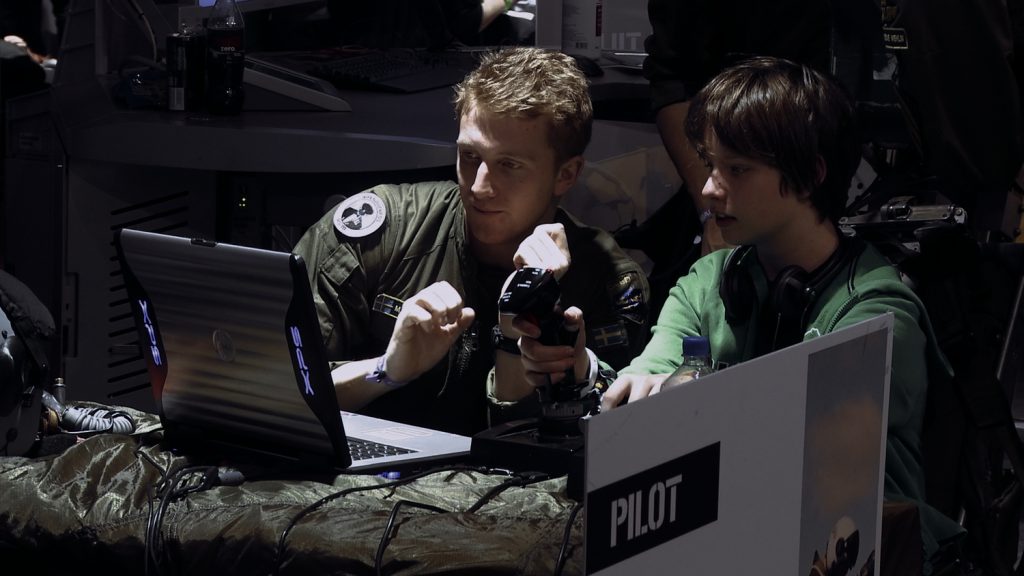
Throughout the development, production and outreach of Drone, The Norwegian Freedom of Expression Foundation has been a great support, and they came on board with the New York Whistleblower Event immediately. But, as we had already exhausted all other possible public funding for outreach in Norway, we knew that the majority of the financing now had to come from international sources.
Bertha Foundation is one of the most important supporters and funders in the documentary world, and we have been in contact with Bertha throughout the production of Drone. Right now this seemed like our only hope. We sent an email to our contacts at Bertha and a phone meeting was set up within a few hours. Although Bertha Foundation did not fund the production of the film, Drone features Shazhad Akbar, human rights lawyer and founder of Foundation for Fundamental Rights (FFR) in Pakistan – one of Bertha’s legal partner organisations in the Bertha Justice Initiative. Shazhad and FFR work tirelessly on drone litigation and advocacy. The Bureau for Investigative Journalism, a Bertha supported organisation, has been a close partner throughout the production and is featured in the film, mostly through the work of Chris Woods. Another Bertha supported project featured in Drone is ‘Inside Out – The People’s Art Project’, who partnered with Reprieve and FFR to produce the pictures of local children to put on the roofs in the village in Pakistan to deter drone bombing. Also, Andrew Feinstein, a campaigner, author and Bertha Fellow, is an expert in the film. The support and enthusiasm from Bertha was incredible, and within 24 hours we were set to go. The swift and strong response from Bertha made our New York Whistleblower Event possible. The next 10 days were packed. Is it possible to pull off a strategy and make an impact in such a short time?
Working the media is crucial in order to both get the message out in the world and make an impact – and we wanted the new whistleblower’s stories to be covered as solidly as possible, reaching the widest audience. Our first choice was the Guardian. We had collaborated with them around the release of Drone and they immediately came on board and got the exclusive rights to break the new whistleblowers’ stories. The Norwegian newspaper Aftenposten and Die Zeit from Germany also joined us for an in-depth coverage for our week in New York.
When Jesselyn Raddack, one of the best whistleblower lawyers in the world, representing Snowden and Brandon, heard that the new drone whistleblowers were gathering in New York, she decided to join us with her partner Kathleen McClellan for the whole week. One of our main concerns was the safety of the new whistleblowers, and none of them had much experience dealing with the media. We contacted FitzGibbons, one of the best former media consulting firms in the US, and they came on board pro-bono. Things started to line up.
Brandon was so excited when we landed in New York. He had been waiting for this moment for years. Being the only voice who had spoken out from the inside of the US drone program since 2011, it meant so much for him to have his former colleagues and friends join him in the efforts. He hadn’t seen them in 5 years. There were lots of big hugs and tall jokes and long journeys down memory lanes when Michael Haas, Stephen Lewis and Brandon met. When Cian Westmoreland joined us, we were complete. Cian had worked as an Air Force technician in Kandahar where he was responsible for the communications infrastructure of the drone program. The former friends and colleagues compared notes and their stories from the inside of the drone bunkers were unbelievable. War stories of another dimension. The impact of their role in the drone war had been devastating for all of them: PTSD, drug abuse, alcoholism, homelessness, and broken families.
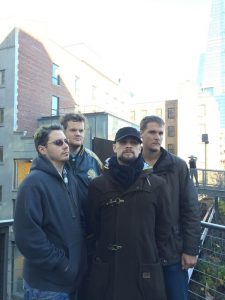
Except for Brandon, none of the new whistleblowers had much experience talking to the media, and none of us really knew how things would work out. First we had to get a scope of the new information they were bringing to the table, and we just had a few hours. Michael, Stephen and Cian were nervous and for good reason. By speaking out, they risked a lot. The Espionage Act, various reactions from the US AirForce and death threats on social media were all considered and discussed. But all of them were determined. They all wanted the world to know what was going on, and they all believed the message about how the war on terror and the drone program fuels terrorism had to get out. Loud and clear.
As soon as we had our feet on the ground in New York, all of our phones and computers seemed to be under attack. Our phones died and our computers crashed. Both Michael and Stephen had strange car problems on their way to the airport. The next morning all the whistleblowers had their assets frozen, and everybody on the film team was unable to access their bank accounts in Norway. But the spirits were high and somehow it was all coming together.
The whistleblowers wrote a letter to the Obama administration saying that the drone program fuels Isis and other terrorist groups. “We cannot sit silently by and witness tragedies like the attacks in Paris, knowing the devastating effects the drone program has overseas and at home,” they wrote. The letter went out at the same time as our press release: Obama’s drone war a ‘recruitment tool’ for Isis, say US air force whistleblowers. We were ready.
We had great meetings and non-stop interviews for print, radio and television, mostly with independent media. We also presented the film and the new whistleblowers to an Open Society gathering of organizations that worked on the drone issue, and we met with Jeremy Scahill and the people behind The Drone Papers from the Intercept. But the mainstream media seemed uninterested. Would they show up at our press conference?

Andy Stepanian from FitzGibbons leaned over. “It is crucial that you don’t talk about things that put you at greater risk! Remember your most important points!” It was very quiet at the office of FitzGibbons by Wall Street. The boys were focused and tense. The press conference was just about to start and the room next to us started to fill up. This was our moment. Could we break the sound wave of the mass media in the States?
The press conference was well attended. Brandon, Michael, Stephen and Cian did great, and their stories and new information from the inside of the drone program was heard and widely covered. The new whistleblowers and the film was amongst others featured in the Guardian, Die Zeit, and a 15-page article in one of the largest newspapers in Norway, Aftenposten, to an extensive coverage in the US media. We were in The Intercept, Vice and Reuters. Democracy Now! focused their whole program on the whistleblowers and the film on the day of the premiere (Friday 20th November, 2016). The Rolling Stones is also making an in-depth feature about the new whistleblowers and the film. But except from NBC, the main US mass media was largely absent and ignored the gathering of the former drone operators and the relase of the film. This was not surprising, but still disappointing to see how a historic event like this couldn’t break the information control in the mass media. But the film did get good reviews in The New York Times, LA Times and the Village Voice!
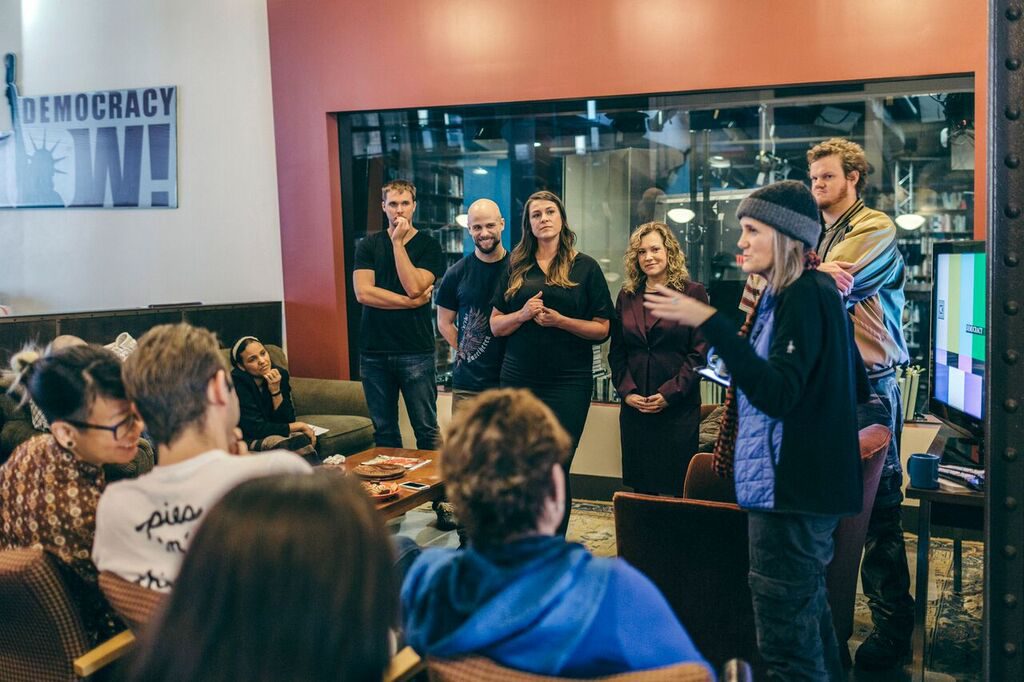
The premiere was at the AMC Theater in Times Square. It felt surreal to screen the film next to blockbuster films like The Hunger Games, and right across the street from the US Army Recruitment Center- which is the location for one of the last scenes in the film. In some ways, the US premiere of Drone completed part of the circle. Our Q&A with the whistleblowers was moderated by Jeremy Scahill. The screening sold out and all in all, it was a great success!
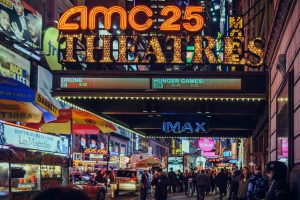
The US release of Drone was a result of all the forces that had supported us throughout the development, production and release of the film coming together. It touched us to see the kind of impact we could have when we all worked together. Jesselyn Raddack and her team did a tremendous job representing the whistleblowers. FitzGibbons helped us prepare for the media. We really could not have done this without their legal assistance and expertise. Our great team of publishers, producers and distributors put Drone on the US map, and layed the ground work for a massive US release. With the support from Bertha, we were able to organize this epic and historic event in the best possible way for all the whistleblowers and everybody included.
It’s hard to measure the real long term impact of the New York Whistleblower event. Did the message about how the drone program is fueling terrorism get out? Did the Obama administration read the letter from the whistleblowers? How many people heard about Drone? We hope to have some answers to these questions soon. Drone was released on Netflix in early February 2016, and we hope it will be seen by a massive US audience. The short documentary with the testimonies from the new drone whistleblowers is in the works and will be released soon.
Please follow the film and the unfolding stories of the drone whistleblowers:
Facebook: https://www.facebook.com/DRONEDOCUMENTARY/
Webpage: http://www.dronethedocumentary.com/
Twitter: @DroneDoc
Instagram: dronedocumentary
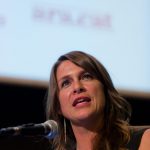 Tonje Hessen Schei, Director of Drone, Flimmer Film AS
Tonje Hessen Schei, Director of Drone, Flimmer Film AS
Follow Tonje on Twitter @TonjeSchei
Article Tags: Documentary / Drones / Whistleblowers